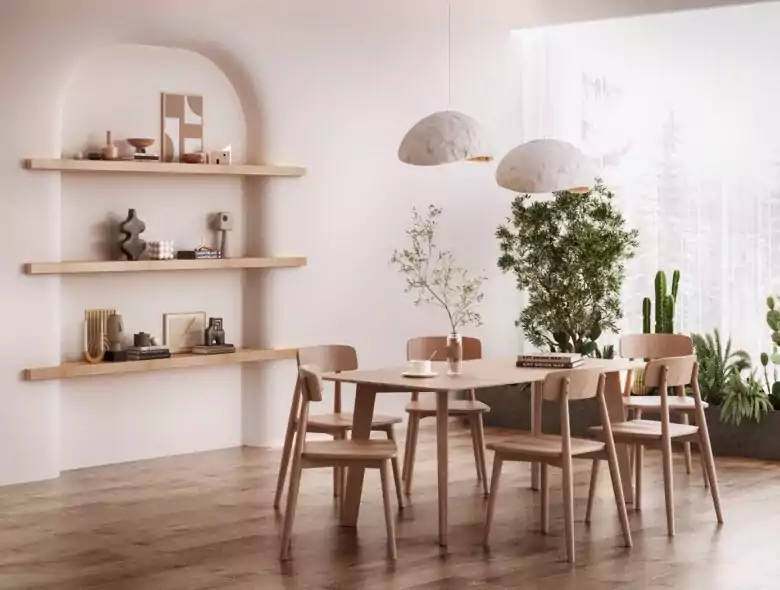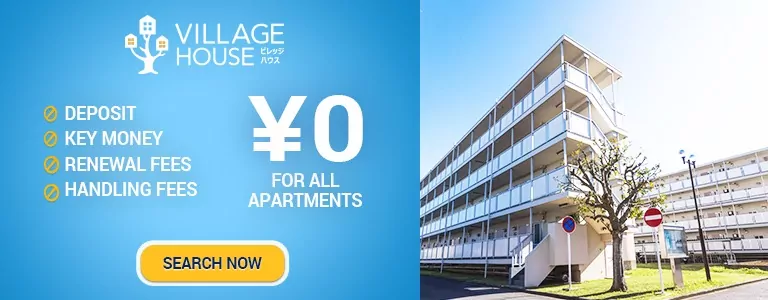Japandi style is becoming increasingly popular around the World. The fusion of Japanese and Scandinavian styles is a calming and harmonious blend. Japandi interior design is a considered look, it tends to involve the ideas of minimalism and nature while combining these with a sense of coziness and warmth to create a balanced home.
Japanese rental apartments, including Village House rental apartments, would suit the Japandi style since they are already usually very functional. If you are looking for a fresh new look for your home, Japandi’s stylish yet timeless feel may be an inspiring place to start. Please read on to learn more about Japandi interior design.

Hygge
The word Hygge comes from a Danish word that means “to give courage, comfort, joy”. Hygge is a way of life in Denmark that encourages mindfulness through a sense of comfort, simplicity, and coziness. These ideas translate into hygge style as well.
There are ten principles of hygge: atmosphere, presence, pleasure, equality, gratitude, comfort, togetherness, harmony, truce, and shelter. These ideals translate into hygge interior design.
Some ways of bringing hygge into your home include incorporating indoor plants, cleaning your home, buying second-hand pieces for your home, upcycling, incorporating more soft textures into your home, and having some statement pieces around the house. Hygge design is usually a neutral color palette with warm tones. Natural elements and natural light are both popular elements in hygge design.
Hygge is particularly popular in the autumn and winter months when people feel more eager to embrace a sense of coziness.
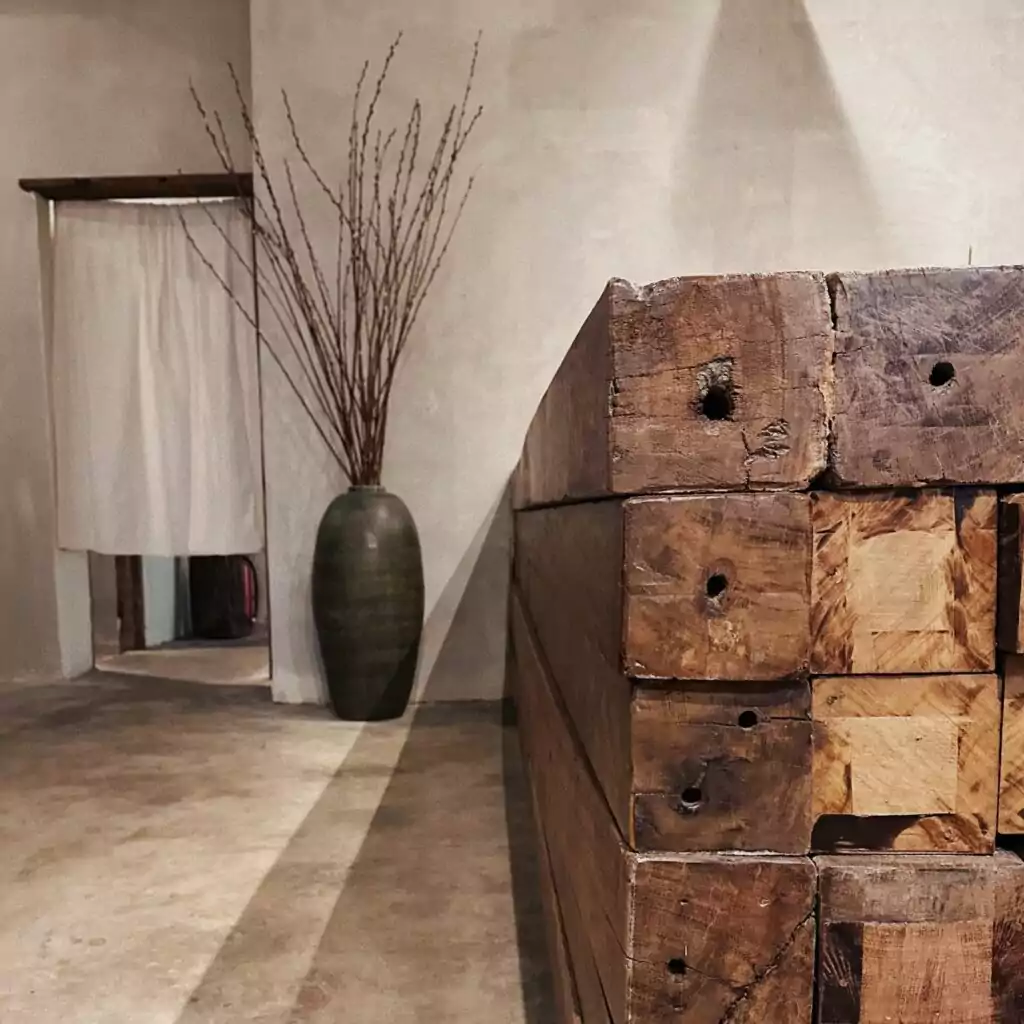
Wabi-Sabi
Wabi-sabi is one of the traditional ideas of Japanese aesthetics. The idea comes from the combination of two different concepts. ‘wabi’ refers to the feeling that simple things have charm, and ‘sabi’ refers to the beauty that is expressed through the passage of time. These are combined to give wabi-sabi its meaning.
It is one of the five principles of Japanese interior design. There are seven principles of wabi-sabi itself in the philosophy of Zen Buddihsm: kanso (simplicity), kokou (withered yet strong), shizen (nature), datsuzoku (freeness), seijaku (tranquility), yugen (subtle grace), and fukinsei (asymmetry). With wabi-sabi, people can be content with what already exists, rather than always reaching for new things and embracing tranquility in their lives and homes. Wabi-sabi encourages us to embrace imperfections.
By using second-hand items, upcycling and renovating pieces to embrace their story and uniqueness, we can incorporate wabi-sabi into our homes. Using natural materials such as wood and linen is also a great way to enjoy the feel of wabi-sabi. At the core of wabi-sabi, however, is the idea of stripping back the unnecessary and embracing a sense of minimalism, so one of the key methods of incorporating wabi-sabi into your home is through decluttering.
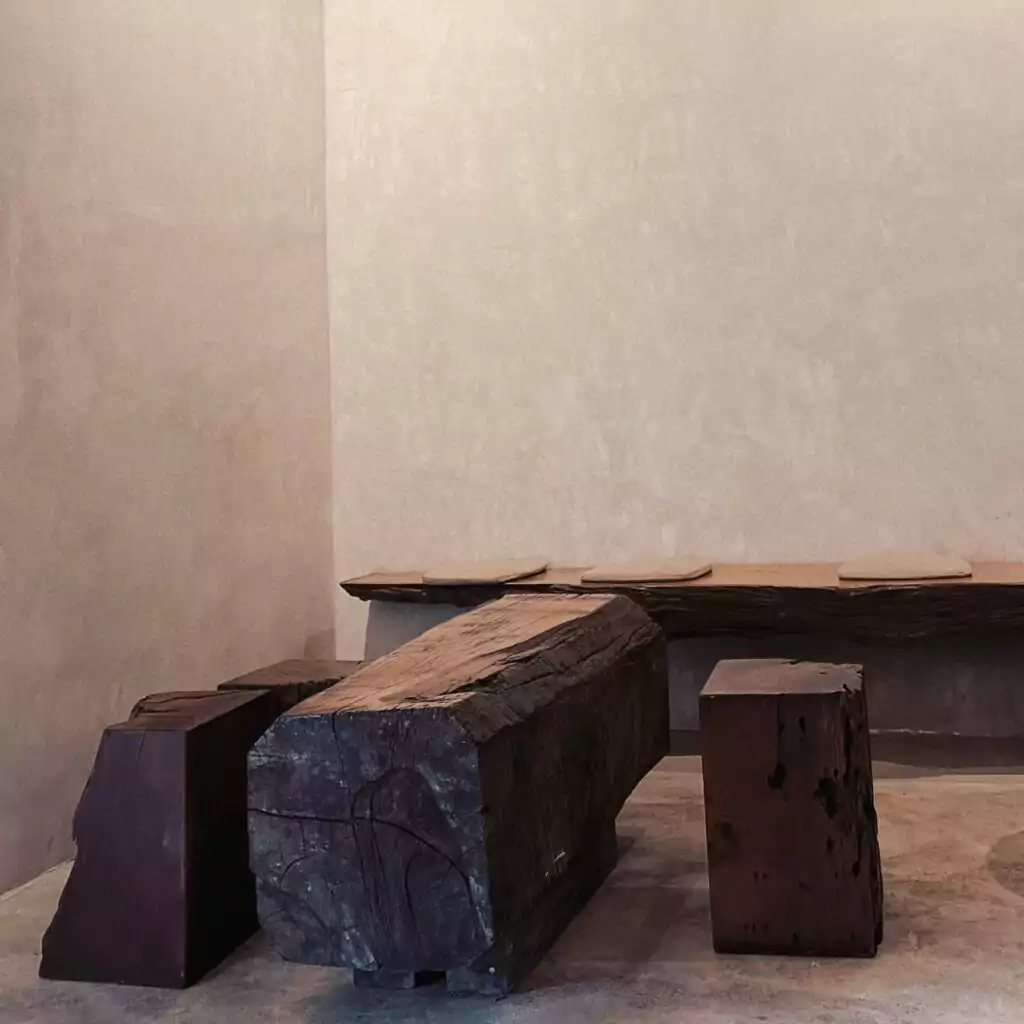
Natural Design
In both Scandinavian style and Japanese style, natural materials such as wood, cotton, and linen are favored over more artificial materials. Wood is a common theme in Japandi interior design. You could accent your home with wooden tables or shelves to create the Japandi look. Similarly, materials such as bamboo are very popular, bamboo works beautifully as a lampshade or storage box, and it can also be woven into plant baskets.
Soft furnishings made from cotton and linen will also help to achieve the natural look of Japandi interiors. You may want to bear this in mind when choosing curtains, seating, bedding, and more.
As well as being made from natural materials, natural design can also be things that look more natural due to the shape. A coffee table that still has some of the wood’s natural shape is a great way of embracing the perfectly imperfect ideas at the heart of Japandi style.
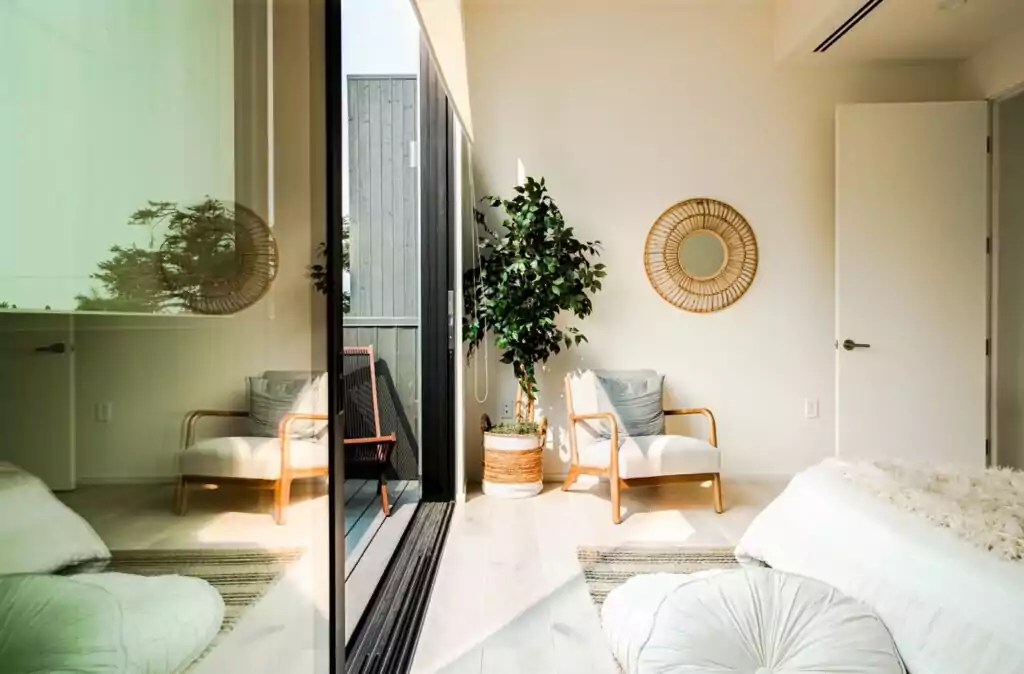
Lighting
Like natural design, natural lighting is a way nature is incorporated into Japandi aesthetics. Where possible, try to maximize the use of natural light by having white or light-painted walls and opening windows. For an extra boost of natural light, place mirrors on walls that get sunshine, this is also a great way of making your home feel more spacious too.
Where natural light isn’t possible, focus on creating a comforting and cozy environment by using warm light. Avoid bright white lights and instead opt for more yellow and orange tones. Lamps are great for creating an inviting and warm environment. By using a combination of lamps at different heights it can also make for interesting shapes when the light is reflected on the walls.
On winter nights, candles are a great way of incorporating natural light into your home so they are particularly popular in Japandi interior design.
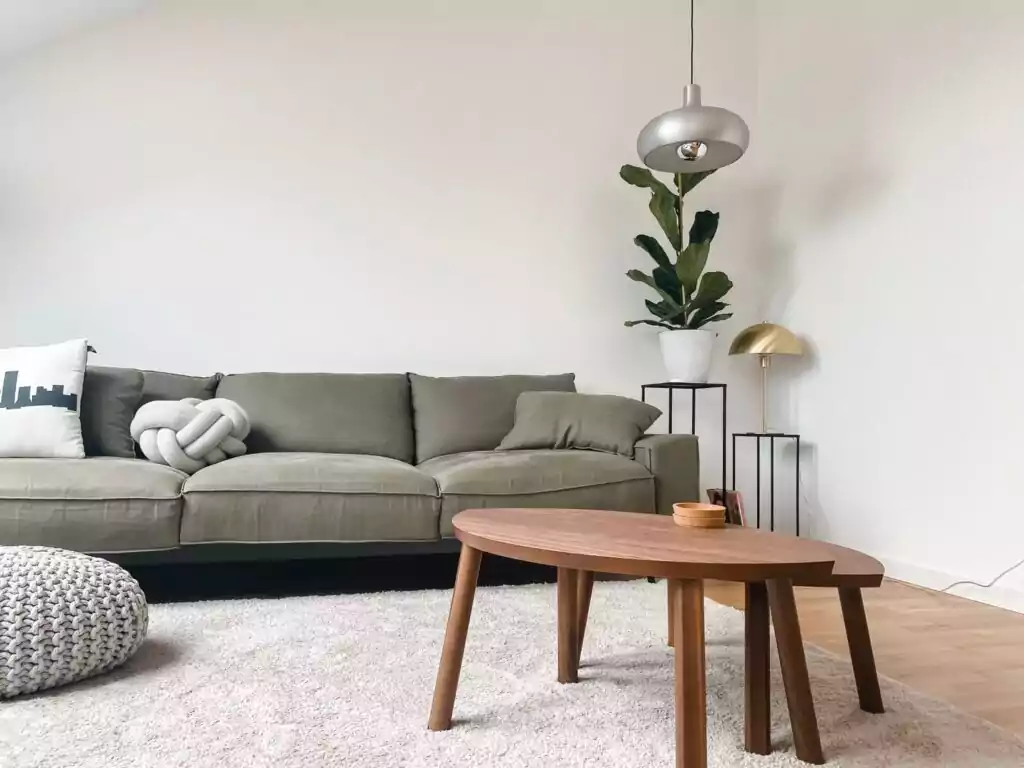
Minimalism
Minimalism is an important part of Japandi style since it requires uncluttered spaces. There are plenty of tips on how to reduce clutter, such as avoiding patterns, bright colors, clearing surfaces, and much more. However, at the heart of it, the most important part is simply getting rid of things that you don’t need or that don’t “spark joy”, as Marie Kondo says,
Additionally, when decorating your home, try to make sure that décor is intentional and functional, such as ceramics, lamps, and books.
Japandi style is a beautiful fusion of two different styles and ideas. It works well in homes throughout the seasons, and it promotes a way of living that could even be better for the environment or our well-being, by encouraging us to surround ourselves with nature, even in our homes, and that less is sometimes more. We hope this post inspires you for your Village House!
Related articles:
- A Guide to California Cool Coastal Interior Design
- Five Principles of Japanese Interior Design
- A Guide to Spanish Revival Interior Design
- How Interior Design Influences Your Mood
- How to Maximize a Japanese-Style Room for Efficient Living


